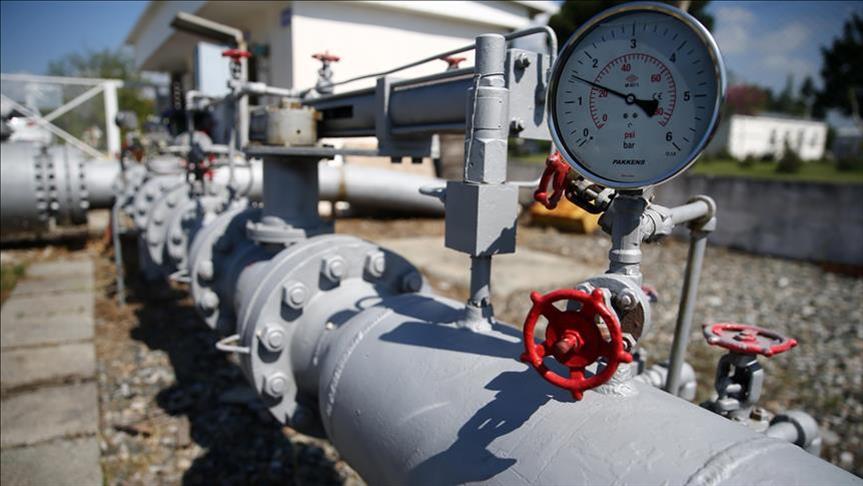Natural gas markets are seeing a rebalancing trend due to lower demand, falling prices and Europe’s higher-than-average gas storage levels despite tight gas supplies after almost two years of the energy crisis, according to energy analysts from the International Energy Agency, (IEA) and the Institute for Energy Economics and Financial Analysis (IEEFA).
This global crisis erupted due to the supply-demand imbalance following the recovery from the impacts of COVID-19 in mid-2020 and the start of Russia’s war in Ukraine, hitting Europe the most.
With the imposition of Western sanctions on Russia as a result of the war, Russia significantly reduced gas flow to Europe, contributing to tighter supplies on the continent and skyrocketing prices, particularly during the refilling season.
The price of futures contracts per megawatt-hour in Europe, trading on the Dutch-based virtual natural gas trading point (TTF), stood at €18.6 per megawatt-hour in August 2021 and reached an all-time high of more than €310 per megawatt-hour in August 2022.
After peaking, prices fell due to lower demand in Europe as a result of milder weather and as the continent implemented energy efficiency measures and imported record amounts of liquefied natural gas, avoiding expected gas shortages.
According to the IEA, in the wake of Russia’s war in Ukraine and the rise in prices, gas demand in the European Union (EU) fell by 55 billion cubic meters in 2022, or 13%, showing its steepest drop in history.
IEA data shows that the EU’s share of Russian gas in the first quarter of 2023 will be less than 10%—pipe and LNG combined.
However, Europe imported record quantities of LNG from alternative sources to replace Russian gas flow.
According to IEEFA data, LNG imports into Europe grew by 60% in 2022 compared to the previous year, with the US, Qatar and Russia emerging as the top exporters.
The sanctions had no effect on Russia’s LNG exports to Europe. According to IEEFA data, Russian LNG accounted for 13% of Europe’s LNG imports, with France, Spain, the United Kingdom, Türkiye, the Netherlands, Italy, and Belgium being the largest Russian LNG importers.
– Russian piped gas to OECD Europe could drop by 35 billion cubic meters
According to Gergely Molnar, an IEA natural gas analyst, gas market fundamentals in Europe and globally have eased significantly due to lower demand.
‘At the moment, EU gas storages are approximately 57% full, which is above their five-year average. This means Europe will need to inject half as much as it injected last year to reach 90% storage levels,’ he said.
Molnar noted a lower risk of price volatility due to lower injection needs for storage, but he cautioned that supply remains tight.
He explained that the reason for this is that the IEA anticipates that Russian piped gas flow to OECD Europe will decline quite significantly this year, by around 35 billion cubic meters. In contrast, he said the LNG supply will increase only by around 20–25 billion cubic meters, not enough to offset the decline in Russian pipe gas deliveries to the EU.
‘We see a trend towards rebalancing the market. Gas prices have dropped by 70% compared to their mid-December highs in Europe. However, the price levels are still higher than the average we have seen between 2016 and 2020. We are still in a relatively high gas price environment,’ he added.
‘We need to be cautiously optimistic,’ he said.
Molnar noted that although market fundamentals are easing, he recommended that the EU still take the necessary measures to mitigate risks that could easily renew market tensions.
– Gas prices unlikely to see last year’s peak
Ana Maria Jaller-Makarewicz, an energy analyst at IEEFA Europe, maintains that despite a colder-than-expected April this year, Europe still has good storage values.
‘We expect that maybe starting next month, Europe could start refilling gas storages again,’ she said.
She also asserts that if efforts to reduce gas demand continue, lower Russian gas supplies will be manageable.
She noted that if LNG demand is low, the price of gas entering Europe will not be as high as it was last year.
‘LNG is now a global commodity and it just does not depend on what happens in Europe but on global gas supply and demand in the market. We do not know exactly if and what will determine the prices. What we have seen is that maybe Chinese demand is not going to grow as we were expecting it to this year,’ Jaller-Makarewicz said, adding that there are some Asian countries struggling to buy LNG.
‘That secures more LNG coming into Europe. Thus, I think the price will also depend on the other buyers of LNG in the world,’ she said.
Although gas prices in Europe could still rise in the refilling season, Jaller-Makarewicz does not expect gas prices in Europe to go as high as last year’s peak in August.
‘Any unprecedented situation can happen and trigger the price. But if today’s conditions continue, we do not think that the prices will be as high as they were in August 2022,’ she noted.

